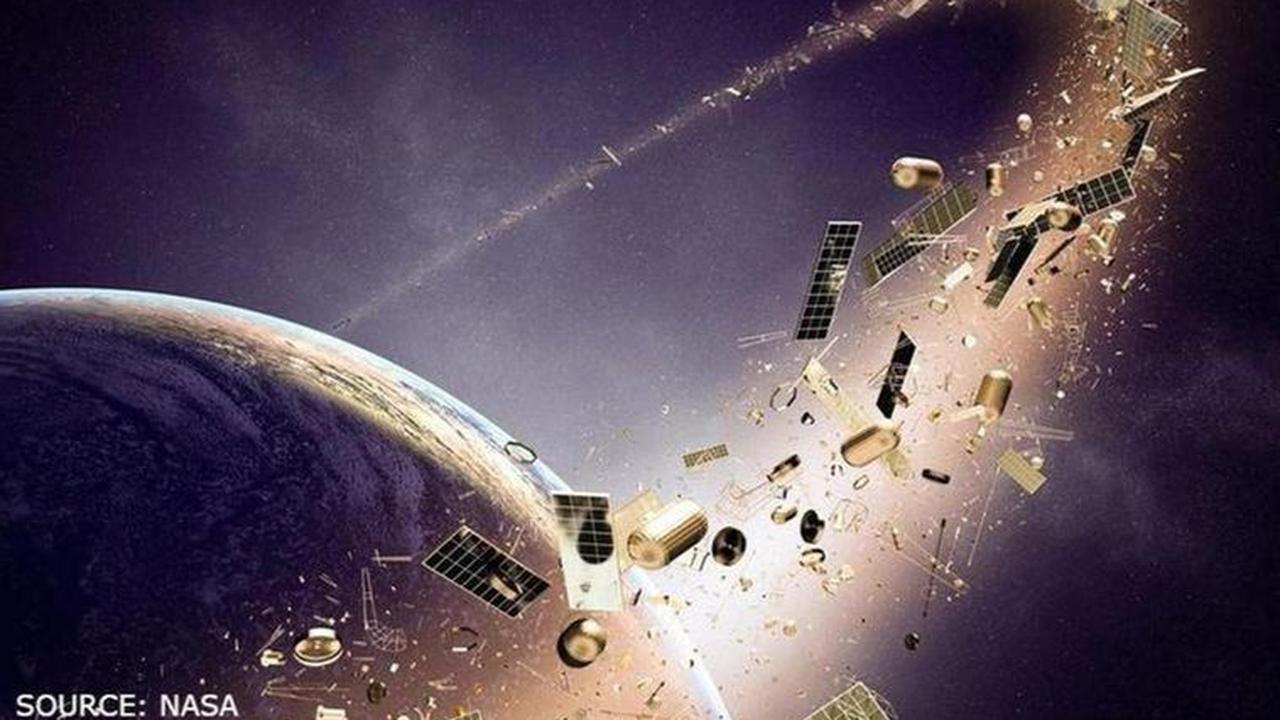Space debris increasingly hampers space flight. Why not just vaporise the rubbish with a laser gun, proposed a TU Delft student at an ESA congress about space junk.
Liam Pieters wants to use a laser to blast space debris. (Artist's impression: Nasa)
Since the start of the space age in the 1950s, debris fragments called ‘space junk’ have been accumulating in Earth orbits. An estimated 34,000 objects larger than 10 centimetres are circling the earth. The roughly 4,600 active satellites have to slalom around them. Luckily we can observe these objects with telescopes and radar systems.
This is not the case for the 900,000 objects of between one and 10 centimetres in size. They whizz by at dizzying speeds and go undetected, but they too are large enough to seriously damage satellites. They are the product of in-orbit fragmentation events, such as collisions between two objects or explosions.
As space debris is posing increasing danger to space flight, it took centre stage this summer at a digital conference organised by the European Space Agency. Ideas discussed to tackle the problem ranged from better data sharing, measures to avoid collisions and plans to de-orbit satellites at the end of missions.
The most radical plan presented at the conference came from the recently graduated TU Delft Aerospace Engineer Liam Pieters. Freely translated, he suggested that we should send a laser gun into orbit that vaporises small pieces of space junk (bits of one to 10 centimetres in size).
‘It is not exactly the type of equipment you can buy at a do-it-yourself store’
“Sure, the idea raised some eyebrows,” says Pieters. “You would need a satellite in a Sun synchronous orbit with a high power 20 kW laser that shoots 600 Joule energy pulses with a repetition frequency of 33 Hz. The system would need to be able to detect and track small objects from 800 kilometres away using a 1.5 m telescope. It is not exactly the type of equipment you can buy at a do-it-yourself store.”
Destroying targets from space with laser beams with pinpoint accuracy strongly sounds like the script of a James Bond movie. In the latter, entire nuclear installations or submarines would be turned into atomic dust, whereas in Pieters’ plan it would only be small crumbs, but still “the idea is ambitious indeed”, as he says. Pieters understands that his idea may seem too far-fetched for certain academics.
Creating a jet that slows down particles
He emphasizes that in his scenario, it would suffice t ablate only parts of the debris particles. “The idea is to ablate about 10% of the object’s mass. The particles emitted from the little piece of space junk in this process form a kind of jet that – if the object is irradiated from the right direction – will slow it down. The object will then also lose altitude and eventually disintegrate in the atmosphere.”
Theoretically, it should be feasible to eliminate 30,000 small objects a year with one clean-up satellite, or so Pieters’ simulations show.
Before this can happen however, some technical challenges need to be tackled. Today, the kind of equipment needed to track small objects from hundreds of kilometres distance is much too large to be fitted on the type of satellite Pieters has in mind. His graduation supervisor, Ron Noomen of the Department of Astrophysics and Space Missions and his colleague Erwin Mooij, are very enthusiastic about the research though. The three engineers are looking for funding to continue the research in the form of a PhD trajectory.
Do you have a question or comment about this article?
tomas.vandijk@tudelft.nl


Comments are closed.